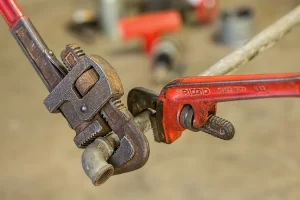Bathtub Overflowing? The Real Reason May Surprise You
 An overflowing bathtub is more than just an inconvenience: it can cause serious water damage, mold growth, and even structural problems if not addressed promptly. While many think the cause is simply a clogged drain or someone forgetting to turn off the faucet, the true cause of overflowing bathtubs often lies deeper. In fact, some of the most common culprits are hidden from view and can surprise even the most observant homeowners.
An overflowing bathtub is more than just an inconvenience: it can cause serious water damage, mold growth, and even structural problems if not addressed promptly. While many think the cause is simply a clogged drain or someone forgetting to turn off the faucet, the true cause of overflowing bathtubs often lies deeper. In fact, some of the most common culprits are hidden from view and can surprise even the most observant homeowners.
Faulty or Blocked Overflow Drain
Most bathtubs are equipped with an overflow drain: a small opening located under the faucet designed to collect excess water before it overflows the edge of the tub. However, if this component is blocked, broken, or improperly connected, it cannot perform its function. Hair, soap scum, and debris can clog the overflow pipe, preventing water from draining properly. In older homes, corrosion or wear in the drainage system may even cause leaks behind the wall, contributing to slow overflows that aren’t immediately visible.
Clogged Main Drain
Another common but overlooked cause of an overflowing bathtub is a deeper blockage in the plumbing system. While the tub itself may appear to drain slowly, the actual blockage may be deeper, affecting multiple drains simultaneously. This type of blockage forces water to flow back into the lowest fixture, which is often the bathtub. If you’ve noticed water backing up into the tub after using the sink or washing machine, this could be the root cause.
Plumbing Ventilation Problems
Plumbing systems rely on adequate ventilation to maintain air pressure and allow water to flow freely through pipes. If the ventilation stack is blocked by debris, nests, or ice (in colder climates), it can cause slow drainage and backflow. A bathtub with inadequate ventilation may fill with water simply because the system can’t “breathe” properly. This is a problem that often requires professional diagnosis, as it’s not something most homeowners can easily spot.
Overflow Caused by Other Fixtures
Sometimes, the bathtub isn’t the cause of overflow at all, but rather the symptom. If the home has shared drains, a problem in one area (such as a clogged toilet or kitchen sink) can cause water to back up into the tub. This usually happens when water use is high. For example, running multiple appliances at once or during heavy rain if your home uses a combined sewer system.
What to do
If the bathtub begins to overflow, immediately turn off the water and remove any visible blockages. Next, check if water is backflowing from other drains in the home. If you suspect a more serious problem, such as a clogged vent, a damaged overflow assembly, or a blockage in the main line, it’s advisable to call a qualified plumber. Attempting to fix hidden plumbing problems without the proper tools or expertise can worsen the situation and cause costly damage.
Call Emergency Plumber in Luton. We are 24 hours available.
